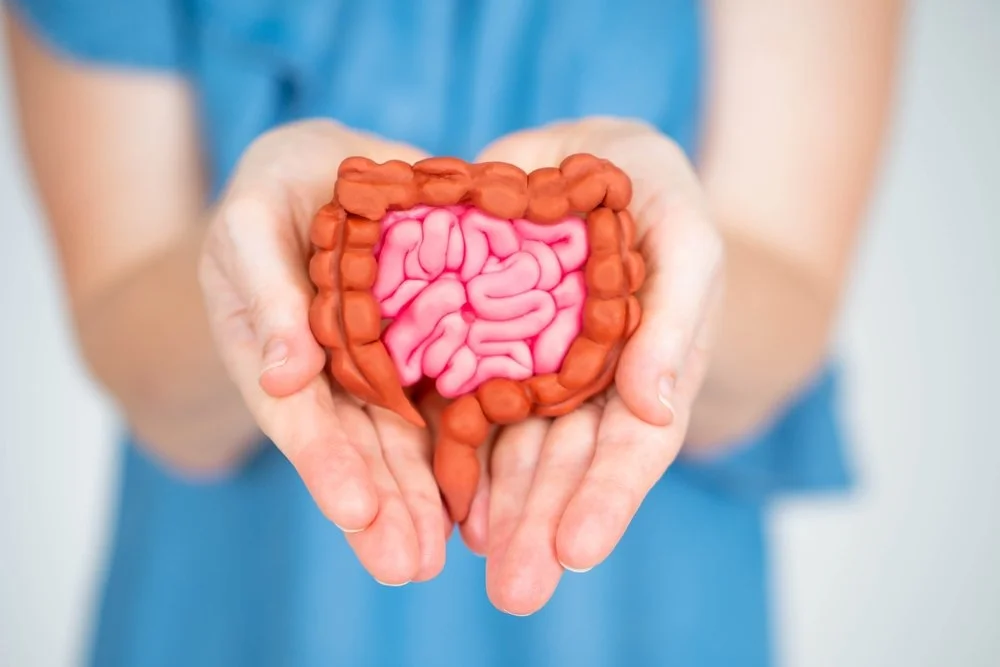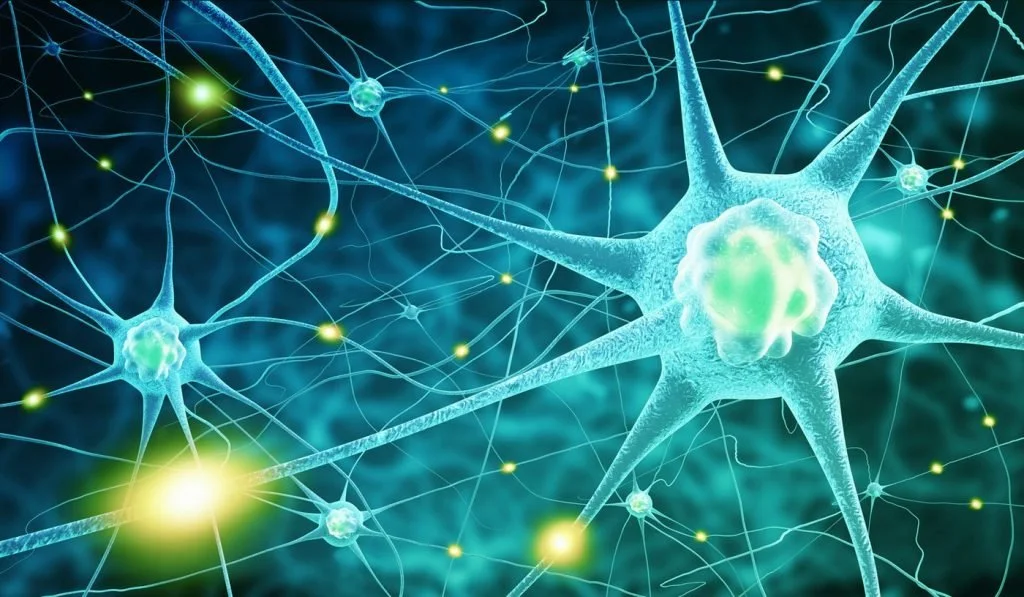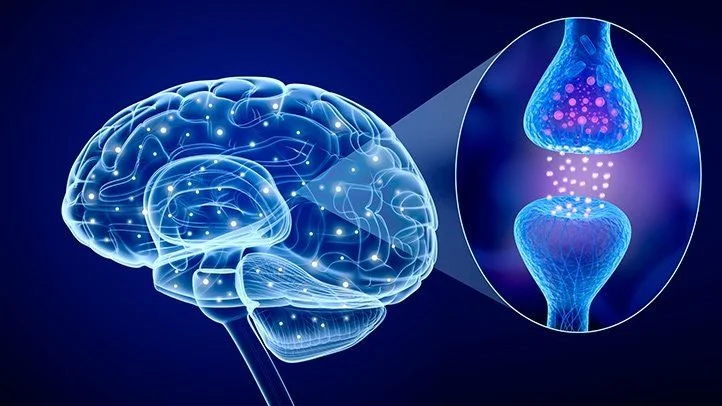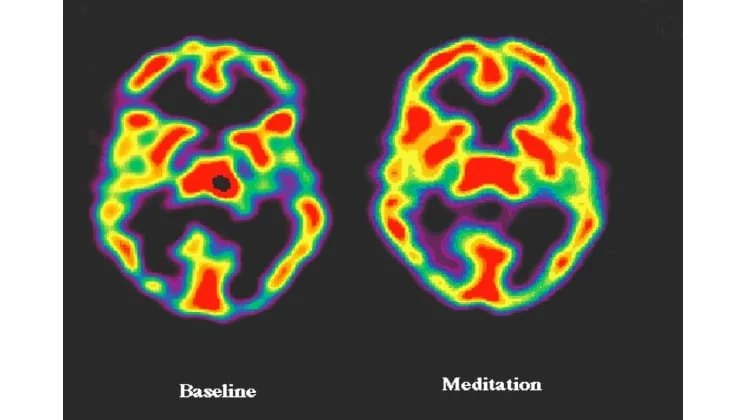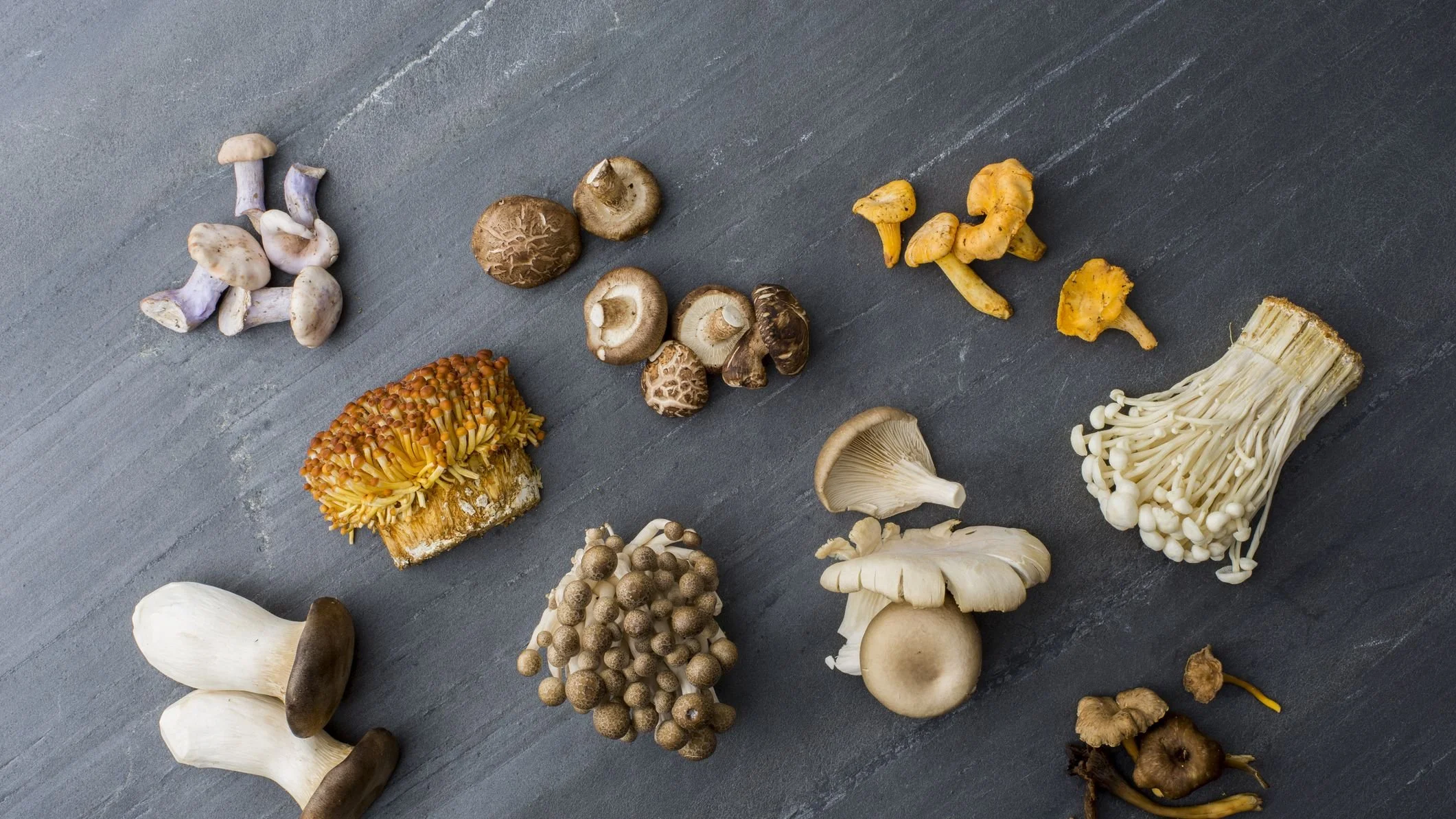Rooted Reflections is a collection of grounded wisdom, seasonal practices, and soul-aligned insights. These writings are meant to nourish your nervous system, inspire inner balance, and reconnect you to the cycles of nature and your own deep knowing.
Nurturing the Gut: The Foundation of Well-being and Wisdom
In the grand symphony of human health and wellness, the gut plays a leading role, much like the conductor of an orchestra. Its impact is far-reaching, influencing not only our physical health but also our mental and emotional well-being. From the food we consume to the thoughts we generate, everything is interconnected. In this blog, we'll explore the pivotal role of gut health, particularly its influence on neurochemicals, decision-making abilities, intuition, and emotional systems. We'll also delve into top practices to enhance and support a thriving gut.
The Gut-Brain Connection
The gut and the brain are in constant communication through a complex network of nerves, hormones, and biochemicals. This connection is often referred to as the "gut-brain axis." The gut is sometimes even called the "second brain" due to the vast number of neurons it contains—about 100 million, comparable to the number in the spinal cord.
The gut produces a significant portion of the body's serotonin, a neurotransmitter associated with feelings of happiness and well-being. This production of neurochemicals like serotonin and dopamine in the gut influences our mood, emotions, and overall mental state. When the gut is in a state of imbalance or distress, it can adversely affect our brain function, leading to mood swings, anxiety, depression, or even more severe neurological issues.
Gut Health and Decision Making
Our gut health impacts not only our emotional state but also our cognitive function and decision-making abilities. Research suggests that a healthy gut can enhance cognitive flexibility, which is crucial for adaptability and making sound decisions. On the contrary, an imbalanced gut, often due to a poor diet or chronic stress, can impair cognitive function, hindering our ability to think clearly and make optimal choices.
Intuition and the Gut Feeling
Have you ever experienced a "gut feeling" or a "butterfly in your stomach" in certain situations? These are not just clichés—there's scientific reasoning behind them. The gut has a remarkable ability to sense and react to the environment, and these signals can influence our intuitive responses.
Recent studies have shown that the gut communicates with the brain through the vagus nerve, providing signals that can influence intuitive decision-making processes. This further emphasizes the importance of a healthy gut in enhancing our intuitive abilities.
Emotional Harmony and Gut Health
The gut is also intimately connected to our emotional system. Emotional well-being is closely tied to gut health, with research suggesting that a balanced gut microbiome can positively impact our emotional responses and help in managing stress and anxiety.
Stress directly affects the gut, often resulting in gastrointestinal discomfort. Conversely, a distressed gut can send signals to the brain that exacerbate stress and emotional imbalances. Hence, maintaining a healthy gut is paramount for emotional stability and resilience.
Practices to Enhance Gut Health
1. Balanced Diet:
Consume a diet rich in fiber, fruits, vegetables, and whole grains. These provide essential nutrients for a healthy gut.
2. Probiotics and Fermented Foods:
Incorporate probiotics and fermented foods like yogurt, kimchi, and kefir to support a diverse and beneficial gut microbiome.
3. Regular Exercise:
Engage in regular physical activity to promote overall health, including gut health. Exercise can help maintain a healthy gut microbiota.
4. Stress Management:
Practice stress-reducing techniques such as mindfulness, yoga, deep breathing, or meditation to mitigate the adverse effects of stress on the gut.
5. Adequate Hydration:
Drink sufficient water throughout the day to ensure optimal digestion and maintain gut health.
6. Adequate Sleep:
Prioritize sufficient and quality sleep to allow your body and gut to rejuvenate and function optimally.
Caring for our gut is fundamental to our overall well-being, impacting not only our digestive system but also our neurological health, emotional balance, intuition, and decision-making capabilities. Embracing a holistic approach by nurturing our gut through a balanced diet, regular exercise, stress management, and adequate rest can empower us to lead healthier, more fulfilling lives. Let's recognize the symbiotic relationship between our gut and our entire being and prioritize its health for a prosperous and joyful existence.
Nadi System: Balancing Your Energy Pathways for Optimal Living
The ancient yogic philosophy of the Nadi system provides a profound understanding of the energetic pathways within the human body. These pathways, often referred to as nadis, play a crucial role in channeling vital life force energy, known as prana. In this blog, we will explore the significance of nadis, their relation to the left and right brain, the central channel, and their impact on our ability to complete tasks. We will also delve into Swara Yoga and how maintaining a balanced nadi flow can lead to a more harmonious and fulfilling life.
Understanding the Nadis:
The nadis are energy channels that run throughout the body, facilitating the flow of prana. The most prominent nadis are the Ida, associated with the left side of the body and the right brain, and the Pingala, associated with the right side and the left brain. The Sushumna, running centrally, represents a state of balance and higher consciousness.
Relation to Left and Right Brain:
Ida Nadi (Left side): Ida is linked to the lunar, receptive, and intuitive aspects. It nourishes the right brain and is associated with qualities like creativity, emotions, and introspection.
Pingala Nadi (Right side): Pingala is linked to the solar, active, and logical aspects. It nourishes the left brain and is associated with qualities like action, analytical thinking, and practicality.
Significance of the Central Channel (Sushumna):
The Sushumna nadi is the central channel, representing balance and harmony. When both Ida and Pingala nadis are in equilibrium, the energy flows through Sushumna, allowing for heightened awareness, spiritual growth, and a sense of oneness.
Swara Yoga and Nostril Dominance:
Swara Yoga, an ancient yogic science, emphasizes the influence of nostril dominance on our energy levels and activities. According to this practice, the dominant nostril changes approximately every 90 minutes, affecting our energy, focus, and productivity. When the dominant nostril is the left (Ida), it is conducive to calm and receptive activities. When it's the right (Pingala), it is favorable for active and dynamic tasks. The transition period between these dominances lasts about 5 minutes and is linked to Sushumna, the central channel of balance.
Impact on Task Completion:
Understanding and aligning our tasks with the dominant nostril can optimize productivity and task completion. Tasks requiring creativity and reflection may be better suited during Ida dominance, while tasks requiring action and logic may align well with Pingala dominance. The transition periods allow for a shift in energy, facilitating a smooth transition between activities.
Best Practices for Balancing the Nadis:
Breath Awareness and Pranayama:
Practice mindful breathing and pranayama techniques to balance the nadis, promote awareness, and enhance the flow of prana.
Yoga and Asana Practice:
Incorporate a regular yoga and asana practice to balance both the left and right brain hemispheres, fostering a harmonious mind-body connection.
Meditation and Mindfulness:
Engage in meditation to quiet the mind, align with the central channel, and cultivate a sense of inner peace and clarity.
Sattvic Diet and Lifestyle:
Adopt a sattvic diet, rich in fresh fruits, vegetables, and whole grains, to support a balanced and peaceful state of being. Follow a disciplined and moderate lifestyle.
Self-Awareness and Reflection:
Cultivate self-awareness through self-reflection and introspection. Understand your natural rhythms and tendencies, allowing you to adapt and align your activities accordingly.
Regular Sleep and Rest:
Prioritize sufficient and restful sleep, which is vital for maintaining a healthy balance of energy and rejuvenating the body and mind.
Incorporating these practices into your daily routine can help harmonize the nadis, align with the natural flow of energy, and promote a balanced, happy, and fulfilled life. Embrace the wisdom of the nadis to unlock your full potential and lead a life in harmony with your inner being.
Unveiling the Rhythmic Magic: The Neurological Marvels of Drumming and How to Begin Your Journey
Drumming is an ancient practice deeply woven into the tapestry of human history, culture, and spirituality. Beyond its musical and cultural significance, drumming holds remarkable potential to impact the brain and neurochemistry positively. In this blog post, we'll explore the fascinating benefits of drumming on the brain and neurochemicals, and guide you on how to commence your own drumming practice.
The Neurological Marvels of Drumming
Stress Reduction and Relaxation: Drumming promotes relaxation by reducing stress levels. The rhythmic patterns and repetitive movements engage the brain, calming the mind and inducing a meditative state.
Enhanced Brain Functionality: Drumming engages various regions of the brain simultaneously, enhancing coordination, concentration, and problem-solving skills. It fosters neural connections and improves overall brain health.
Release of Neurochemicals: Drumming stimulates the release of endorphins, the body's natural painkillers, promoting feelings of pleasure and euphoria. It also triggers the production of serotonin and dopamine, which aid in improving mood and reducing anxiety.
Balanced Brain Hemispheres: Drumming helps synchronize brain hemispheres, fostering a state of balance between the analytical and creative aspects of the mind. This balance enhances creativity and emotional expression.
Strengthened Immune System: Regular drumming has been associated with a boost in the immune system. The rhythmic vibrations help stimulate cells and enhance the body's natural defense mechanisms.
How to Begin Your Drumming Practice
Choose the Right Drum: Select a drum that resonates with you, whether it's a djembe, bongo, conga, frame drum, or any other type. Consider the sound, size, and how it feels when you play it.
Learn Basic Drumming Techniques: Familiarize yourself with basic drumming techniques like hand positioning, striking, and different rhythms. There are plenty of online tutorials and instructional videos to help you get started.
Start with Simple Beats: Begin your practice with simple drumming beats and rhythms. Focus on maintaining a steady tempo and gradually experiment with variations and improvisations.
Practice Regularly: Consistency is key. Set aside dedicated time each day or week for your drumming practice. The more you practice, the more proficient you'll become.
Join Drum Circles or Classes: Consider joining a drum circle or taking drumming classes in your community. Drumming with others can provide a sense of community and enhance your skills and creativity.
Express Yourself: Allow your drumming practice to be a form of self-expression. Let your emotions flow through the rhythm, and don't be afraid to experiment with different styles and patterns.
Embrace the Journey: Enjoy the process of learning and growing as a drummer. Embrace the joy and therapeutic benefits that drumming brings to your life.
Embarking on a drumming journey can open up a world of neurological wonders and creative exploration. Through the rhythmic magic of drumming, you can enhance brain functionality, reduce stress, and tap into a wellspring of neurochemicals that uplift your spirit. So, grab a drum, let the beats guide you, and start your rhythmic odyssey toward a harmonious mind and body.
Boosting Your Mood: The Role of Neurochemicals, Practices, and Foods
Your mood is influenced by a complex interplay of neurochemicals in your brain. While it's natural to experience fluctuations in mood, there are practices and dietary choices you can make to support mood stabilization and enhance feelings of happiness. In this blog, we'll explore the most relevant neurochemicals for mood regulation, along with practices and foods that can help boost the good ones and detox from the harmful ones.
Serotonin - The Happiness Neurochemical: Serotonin is often called the "feel-good" neurotransmitter. It plays a crucial role in mood regulation and feelings of happiness. To boost serotonin levels, consider:
Practice mindfulness and meditation: These techniques can reduce stress and promote a sense of calm, which can boost serotonin production.
Aerobic exercise: Regular physical activity can enhance serotonin release.
Get Massage Regularly
Foods: Consume foods rich in tryptophan, such as turkey, chicken, bananas, and dark chocolate. Tryptophan is a precursor to serotonin.
Dopamine - The Reward Neurochemical: Dopamine is associated with pleasure and reward. To support healthy dopamine levels, try:
Set achievable goals: Accomplishing tasks releases dopamine, providing a sense of accomplishment and motivation.
Practice gratitude: Recognizing and appreciating positive aspects of life can trigger dopamine release.
Foods: Consume tyrosine-rich foods like lean meats, fish, dairy, and nuts. Tyrosine is a precursor to dopamine.
GABA - The Calming Neurochemical: Gamma-aminobutyric acid (GABA) is an inhibitory neurotransmitter that promotes relaxation. To enhance GABA production:
Yoga and deep breathing: These practices can stimulate GABA release and reduce anxiety.
Foods: Incorporate foods high in GABA precursors, such as whole grains, beans, and fermented foods like kimchi.
Endorphins - The Natural Painkillers: Endorphins are natural pain relievers and mood boosters. To increase endorphin levels:
Regular exercise: Aerobic workouts, like running and dancing, trigger the release of endorphins.
Laughter: Engage in activities that make you laugh, as laughter releases endorphins.
Spicy foods: Some people experience an endorphin release when consuming spicy foods.
Cortisol - The Stress Hormone: High levels of cortisol can negatively impact mood. To reduce cortisol levels:
Practice stress management: Engage in relaxation techniques like deep breathing, progressive muscle relaxation, or tai chi.
Balanced diet: Consume a balanced diet to stabilize blood sugar levels and prevent cortisol spikes.
Avoiding Artificial Stimulants: Excessive caffeine and sugar intake can lead to mood swings. Limit your consumption of these substances, especially late in the day.
Stay Hydrated: Dehydration can affect mood and cognitive function. Make sure you drink enough water throughout the day.
Get Adequate Sleep: Sleep is crucial for mood regulation. Aim for 7-9 hours of quality sleep each night.
Maintaining a stable and happy mood involves a combination of factors, including neurochemical balance, lifestyle practices, and dietary choices. By nurturing the production of beneficial neurochemicals and minimizing the impact of harmful ones, you can take significant steps toward enhancing your overall mood and well-being. Incorporate these practices and foods into your daily routine, and remember that consistency is key to long-term mood stabilization and happiness.
Serotonin Boosting Meal Inspiration
Boosting serotonin levels through nutrition involves incorporating foods rich in tryptophan (an amino acid that helps produce serotonin) and supporting nutrients like B vitamins and complex carbohydrates. Here are some meal ideas to help promote serotonin production:
Salmon and Quinoa Bowl:
Grilled salmon (high in tryptophan).
Quinoa (complex carbohydrate).
Leafy greens (spinach, kale) for B vitamins.
Steamed broccoli and carrots.
Turkey and Sweet Potato Skillet:
Ground turkey (contains tryptophan).
Sweet potatoes (complex carbohydrates).
Bell peppers and spinach (for additional nutrients).
Sprinkle with pumpkin seeds (source of tryptophan) before serving.
Chickpea and Spinach Salad:
Chickpeas (tryptophan source).
Spinach (rich in folate, a precursor to serotonin).
Cherry tomatoes, cucumbers, and red onion.
Olive oil and lemon dressing.
Quinoa Stuffed Bell Peppers:
Quinoa (tryptophan-rich).
Bell peppers.
Ground turkey or tofu for protein.
A variety of colorful vegetables.
Banana and Almond Butter Smoothie:
Banana (contains tryptophan).
Almond butter (rich in tryptophan and healthy fats).
Greek yogurt (protein).
Spinach or kale for added nutrition.
Oatmeal with Berries and Nuts:
Oats (tryptophan source and complex carbs).
Berries (antioxidants).
Walnuts or almonds (tryptophan-rich).
Drizzle of honey for natural sweetness.
Lentil Soup:
Lentils (tryptophan source and protein).
Carrots, celery, and onions.
Vegetable broth.
Serve with a side of whole-grain bread.
Dark Chocolate and Berry Parfait:
Dark chocolate (in moderation, it can boost serotonin).
Greek yogurt (protein).
Berries (antioxidants).
A sprinkle of chia seeds.
Tofu Stir-Fry:
Tofu (contains tryptophan).
Colorful stir-fry vegetables (broccoli, bell peppers, snap peas).
Brown rice or quinoa (complex carbs).
Spinach and Mushroom Omelette:
Eggs (tryptophan source).
Spinach and mushrooms (rich in B vitamins).
Cheese (in moderation).
Serve with whole-grain toast.
Incorporating these foods into your meals can contribute to serotonin production and help support mood and overall well-being. It's important to maintain a balanced diet and consult a healthcare professional for personalized advice.
Serotonin: The Key to a Balanced Mind and Body
Serotonin aka The Happiness Molecule and The Mood Stabilizer
Serotonin, often referred to as the "feel-good" neurotransmitter, plays a crucial role in regulating mood, appetite, sleep, and overall well-being. Understanding where serotonin is produced, its functions, factors that deplete it, and how to boost it through diet, herbs, and practices can significantly impact our mental and physical health. In this blog post, we delve into the fascinating world of serotonin to help you enhance your serotonin levels naturally.
What is Serotonin and Where is it Produced?
Serotonin is a neurotransmitter, a chemical that transmits signals in the brain. It's primarily produced in the gastrointestinal tract (in enterochromaffin cells) and the brain (in nerve cells). About 90% of serotonin is found in the gut, where it regulates various functions related to digestion and gut health, and the rest is produced in the brain, influencing mood and other aspects of mental health.
Understanding serotonin is like having a skilled conductor directing an orchestra. Serotonin, the maestro of our mental symphony, stands at the podium, guiding the mood, tempo, and harmony of our brain's music. With each well-timed note, it orchestrates a melodious composition, evoking feelings of joy, calmness, and contentment, weaving a beautiful and harmonious melody that plays throughout the concert of our lives. Just as a conductor shapes the ensemble's performance, serotonin directs our neural ensemble, harmonizing the intricate elements of our mental landscape into a euphonious arrangement of emotions and well-being.
Functions of Serotonin:
Mood Regulation: Serotonin helps regulate mood, promoting feelings of happiness, contentment, and well-being. It's often linked to managing stress, anxiety, and depression.
Appetite and Digestion: In the gut, serotonin regulates appetite, promoting a sense of fullness and satisfaction after eating. It also aids in proper digestion.
Sleep: Serotonin plays a role in regulating the sleep-wake cycle. It's a precursor to melatonin, a hormone that helps in sleep regulation.
Pain Perception: Serotonin affects how the body perceives and manages pain. It's involved in pain transmission and processing.
Factors that Deplete Serotonin:
Several factors can lead to a decrease in serotonin levels:
Poor Diet: Diets high in processed foods, sugar, and caffeine can negatively impact serotonin production and function.
Stress and Chronic Stress: Chronic stress can deplete serotonin levels, affecting mood and overall well-being.
Lack of Sunlight: Sunlight exposure helps in the production of serotonin. Reduced exposure, especially in winter months, can lead to a drop in serotonin levels.
Lack of Exercise: Regular physical activity is linked to increased serotonin levels. Sedentary lifestyles can contribute to lower serotonin production.
Boosting Serotonin Naturally:
Diet:
Foods Rich in Tryptophan: Tryptophan is an amino acid precursor to serotonin. Include foods like turkey, chicken, fish, nuts, seeds, eggs, and dairy in your diet.
Complex Carbohydrates: Foods like whole grains, fruits, and vegetables can indirectly boost serotonin by aiding tryptophan absorption.
Herbs and Supplements:
St. John's Wort: This herb is known to potentially boost serotonin levels and alleviate mild to moderate depression.
5-HTP (5-Hydroxytryptophan): 5-HTP is a supplement that can increase serotonin levels as it's a precursor to serotonin.
Practices and Lifestyle Changes:
Exercise: Regular physical activity, such as aerobic exercises, can increase serotonin levels.
Massage Therapy: Massage therapy has been shown to increase serotonin levels and decrease cortisol levels, which is the hormone associated with stress.
Meditation and Yoga: Mindfulness practices and yoga can help reduce stress and promote a sense of calm, indirectly boosting serotonin levels.
Sunlight Exposure: Spend time outdoors, especially in the morning, to get natural sunlight, which aids serotonin production.
Understanding serotonin and how to naturally boost its levels can significantly impact our mental and physical well-being. By incorporating a serotonin-friendly diet, herbs, supplements, and mindful practices into our daily routine, we can maintain balanced serotonin levels and foster a more positive, healthy, and fulfilling life. Always consult a healthcare professional before making significant changes to your diet or incorporating supplements.
Elevating Corporate Wellness: The Power of Yoga, Breathwork, and Massage
In today's fast-paced corporate world, prioritizing employee well-being is no longer an option—it's a necessity. Corporate wellness initiatives that integrate yoga, breathwork, and massage are gaining traction as powerful tools to enhance employee health, productivity, and overall satisfaction.
The Essence of Corporate Wellness
Corporate wellness encompasses strategies and initiatives aimed at promoting a healthy lifestyle and well-being within the workplace. By investing in employee wellness, organizations foster a positive work environment, reduce stress, and ultimately improve the bottom line through enhanced productivity and reduced absenteeism.
The Yoga Advantage
1. Stress Reduction and Mental Clarity
Yoga, often referred to as a moving meditation, aids in stress reduction by calming the mind and promoting relaxation. Employees who regularly practice yoga experience increased mental clarity and improved focus, leading to better decision-making and enhanced productivity.
2. Physical Fitness and Flexibility
Regular yoga practice improves physical fitness, flexibility, and posture. This not only contributes to overall employee health but also reduces the risk of workplace injuries, allowing employees to perform at their best without physical limitations.
3. Promotes Team Cohesion
Group yoga sessions foster team cohesion and bonding among employees. Sharing a yoga practice encourages collaboration, empathy, and a sense of community, leading to a more harmonious work environment.
The Breathwork Advantage
1. Stress Management
Breathwork techniques, such as controlled breathing and deep breathing, activate the body's relaxation response. Employees can use these techniques to manage stress, reduce anxiety, and improve their overall emotional well-being.
2. Increased Energy and Focus
Practicing breathwork energizes the body and mind, aiding in increased focus and productivity. Employees can employ these techniques to reenergize during the workday, promoting sustained levels of productivity.
The Massage Advantage
1. Stress Relief and Relaxation
Massage therapy is a powerful tool for immediate stress relief and relaxation. On-site chair or table massages during work hours can rejuvenate employees, leading to increased productivity and improved overall well-being.
2. Alleviation of Physical Discomfort
Massage helps alleviate physical discomfort caused by prolonged sitting and repetitive movements, common issues in office settings. By addressing these discomforts, employees can function more comfortably and efficiently.
Integrating Wellness Initiatives
Integrating yoga, breathwork, and massage into a company's wellness program can yield a myriad of benefits. By providing these holistic wellness experiences, organizations demonstrate their commitment to employee health and happiness, resulting in a more engaged, productive, and loyal workforce.
In Conclusion
Corporate wellness initiatives that incorporate yoga, breathwork, and massage are transformative tools for enhancing employee well-being. By investing in these wellness practices, organizations nurture a positive work environment, ultimately leading to improved employee satisfaction and productivity. Prioritize employee wellness and witness the positive impact it has on your organization's success.
Unveiling the Mother Wound: A Path to Healing and Wholeness
The mother-daughter relationship is one of the most profound and complex bonds a person can experience. This relationship isn't always smooth, however, and it can leave lasting emotional imprints. The "mother wound" is a term that encapsulates the emotional pain and trauma that can arise from a challenging mother-daughter or mother-son relationship. In this blog post, we will delve into what the mother wound is, why it's prevalent, and explore ways to heal and grow from it.
Understanding the Mother Wound:
The mother wound refers to the emotional pain and psychological scars that stem from an unsatisfying or challenging relationship with one's mother. It can result from various factors, including neglect, emotional abuse, criticism, unmet needs, or unfulfilled expectations. This wound can manifest in feelings of inadequacy, low self-esteem, fear of abandonment, difficulty trusting others, and challenges in forming healthy relationships.
Why the Mother Wound is Common for Daughters:
Cultural and Societal Expectations: Societal norms and cultural expectations often place significant pressure on mothers to fulfill specific roles and expectations. When a mother struggles to meet these expectations, it can create a sense of inadequacy in both the mother and daughter.
Generational Patterns: Unresolved issues and wounds can be passed down through generations. Mothers often parent based on their own experiences and the way they were raised, which can perpetuate patterns of emotional wounds.
Interplay of Emotions: Mother-daughter relationships can be intense and emotionally charged. The dynamics often involve a mix of love, dependency, rivalry, and conflicting emotions, which can lead to misunderstandings and emotional wounds.
Lack of Emotional Expression and Communication: In some families, open communication and emotional expression may not be encouraged. This lack of healthy communication can lead to emotional distance and misunderstandings, fueling the mother wound.
Healing the Mother Wound:
Self-Awareness and Acceptance:
Acknowledge and accept the existence of the mother wound. Understand its impact on your life and emotional well-being.
Therapy and Counseling:
Seek professional help from therapists or counselors experienced in family dynamics and trauma. They can guide you in processing and healing the wounds.
Inner Child Work:
Engage in inner child healing practices to connect with your younger self and provide the nurturing and understanding that may have been lacking during your formative years.
Mindfulness and Self-Compassion:
Cultivate mindfulness and self-compassion practices to treat yourself with kindness and understanding. Let go of self-blame and judgment.
Setting Boundaries:
Learn to set healthy boundaries in relationships, including with your mother if necessary, to protect your emotional well-being.
Building Supportive Relationships:
Surround yourself with a support network of friends, mentors, or support groups that can provide the emotional validation and connection you need.
Healing the mother wound is a profound and transformative journey toward self-discovery and self-compassion. By acknowledging its presence, understanding its roots, and actively engaging in healing practices, you can liberate yourself from the emotional burdens that have held you back. Remember, healing takes time, effort, and patience, but the result is a more authentic and empowered version of yourself, capable of forming nurturing relationships and leading a fulfilling life.
Here are some top-rated books and resources that can help you learn more about the mother wound and embark on the path to healing:
Books:
"The Mother Wound: Understanding the Influence of Your Mother on Your Life and How to Heal" by A. Anderson
This book delves into the impact of the mother-daughter relationship, exploring how it shapes a woman's life and offering guidance on how to heal and grow from any wounds.
"Will I Ever Be Good Enough?: Healing the Daughters of Narcissistic Mothers" by Dr. Karyl McBride
Dr. McBride provides an insightful examination of the dynamics of narcissistic mother-daughter relationships and offers strategies for healing and overcoming the wounds inflicted by such relationships.
"Mother-Daughter Wisdom: Understanding the Crucial Link Between Mothers, Daughters, and Health" by Dr. Christiane Northrup
Dr. Northrup explores the mother-daughter relationship from a holistic perspective, delving into its impact on a woman's well-being and offering guidance on how to improve this essential bond.
"The Emotionally Absent Mother: How to Recognize and Heal the Invisible Effects of Childhood Emotional Neglect" by Jasmin Lee Cori MS LPC
This book addresses the effects of emotional neglect by a mother and provides practical advice on recognizing and healing the invisible wounds it can cause.
"Daughter Detox: Recovering from an Unloving Mother and Reclaiming Your Life" by Peg Streep
Peg Streep's book focuses on the journey of healing from an unloving mother-daughter relationship, offering guidance and exercises to help readers recover and reclaim their lives.
These resources offer a wealth of knowledge, personal stories, and professional guidance to support you on your healing journey from the mother wound. Remember to take your time, be patient with yourself, and seek the support you need as you navigate this transformative process.
Embracing Healing: Yoga Poses to Ease Grief and Find Inner Peace
Yoga can be a helpful tool to overcome grief by promoting emotional release, relaxation, and a sense of well-being. Here are some yoga poses that can be particularly beneficial for processing and overcoming grief:
Child's Pose (Balasana): This gentle resting pose provides a sense of safety and comfort. It can help release tension in the back, shoulders, and hips, allowing emotions to flow.
Wide-Legged Forward Fold (Prasarita Padottanasana): This pose encourages a sense of surrender and release. The inversion aspect can help shift energy and provide a fresh perspective.
Supported Bridge Pose: Using a bolster or a block under the sacrum in Bridge Pose (Setu Bandha Sarvangasana) can create a soothing heart-opening stretch and encourage emotional release.
Thread the Needle Pose: This pose involves gentle twisting and stretching of the upper back, shoulders, and neck, helping to release tension and free trapped emotions.
Puppy Pose (Uttana Shishosana): Similar to Child's Pose but with the arms extended forward, Puppy Pose opens the heart and shoulders, creating space for emotional release.
Fish Pose (Matsyasana): Fish Pose offers a heart-opening stretch that can help release stored emotions. It also stimulates the throat chakra, encouraging self-expression.
Seated Forward Fold (Paschimottanasana): This pose fosters introspection and a calming of the mind. It can provide a space to process emotions and find a sense of inner peace.
Legs-Up-the-Wall Pose (Viparita Karani): This gentle inversion relaxes the nervous system and encourages blood circulation, creating a calming and nurturing effect.
Savasana (Corpse Pose): A period of deep relaxation and rest, Savasana allows you to fully integrate the benefits of your practice and process any emotions that arise.
Gentle Twists: Gentle seated or supine twists can help release tension in the spine and provide a sense of emotional release.
Remember that yoga is a personal practice, and each person's experience with grief is unique. Approach these poses with mindfulness and self-compassion. As you practice, focus on your breath and allow any emotions that come up to be acknowledged without judgment. If you're dealing with deep grief, consider practicing under the guidance of a trained yoga instructor or therapist who can offer support.
Unlocking the Mind: How Meditation Transforms Your Brain
Meditation has been shown to have various positive effects on the brain. Regular meditation practice can lead to changes in brain structure, function, and connectivity. Here are some ways in which meditation can impact the brain:
Increased gray matter: Studies have found that long-term meditators tend to have increased gray matter volume in certain areas of the brain. These areas include the prefrontal cortex, which is associated with attention, decision-making, and self-awareness, as well as the hippocampus, which plays a role in memory and learning.
Improved focus and attention: Meditation practices that involve focusing attention, such as mindfulness meditation, can enhance the ability to sustain attention and resist distractions. This improvement is often associated with changes in the prefrontal cortex, which is involved in regulating attention.
Emotional regulation: Meditation has been shown to impact the brain's emotional processing centers, such as the amygdala. Regular meditation practice can lead to decreased activation of the amygdala, resulting in reduced reactivity to emotional stimuli and improved emotional regulation.
Reduced stress response: Meditation activates the relaxation response and can help reduce the physiological and psychological effects of stress. Studies have shown that regular meditation practice can lead to decreased activity in the amygdala and reduced release of stress hormones like cortisol.
Enhanced self-awareness and introspection: Meditation encourages self-reflection and self-awareness. It can activate the default mode network (DMN), which is associated with mind-wandering, self-referential thoughts, and introspection. Strengthening the DMN through meditation can enhance self-awareness and introspective abilities.
Improved cognitive abilities: Certain forms of meditation, such as focused attention or mindfulness practices, have been found to enhance cognitive functions like working memory, attentional control, and cognitive flexibility. These improvements are thought to arise from changes in brain networks involved in attention and executive functions.
It's important to note that the specific effects of meditation on the brain can vary depending on the type and duration of practice, as well as individual differences. The brain is a complex organ, and research in this field is ongoing to further understand the mechanisms behind the effects of meditation.
Unlocking Inner Energy: Exploring the Power of Yoga Bandhas
Bandhas are specific energy locks or muscular contractions used in yoga and pranayama (breathing exercises). The term "bandha" comes from Sanskrit and translates to "lock" or "seal." The practice of bandhas involves engaging certain muscle groups to redirect and contain the flow of energy within the body.
There are three main bandhas commonly practiced in yoga:
Mula Bandha (Root Lock): Mula Bandha involves contracting the muscles of the pelvic floor, specifically the area between the anus and the genitals. It is often described as a lifting and drawing upward of the perineum. Mula Bandha is believed to help control and channel the energy associated with the root or base of the body, fostering stability, grounding, and energy conservation.
Uddiyana Bandha (Abdominal Lock): Uddiyana Bandha is performed by drawing the abdomen in and up toward the spine after a full exhalation. This action involves the contraction of the diaphragm, transverse abdominal muscles, and the lower ribcage area. Uddiyana Bandha is said to activate and strengthen the core, increase energy flow in the upper body, and stimulate the digestive system.
Jalandhara Bandha (Throat Lock): Jalandhara Bandha involves gently lowering the chin and bringing the throat slightly back while keeping the neck long and aligned. This bandha is usually practiced during breath retention, particularly in pranayama practices. Jalandhara Bandha is believed to regulate the flow of energy in the throat region, balance the thyroid gland, and stimulate the Vishuddhi (throat) chakra.
These bandhas are typically practiced in conjunction with specific breathing techniques, as they can help regulate and direct the flow of prana (life force energy) in the body. They are considered advanced practices and are often introduced after a solid foundation in asana (physical postures) and pranayama has been established.
It's important to learn and practice bandhas under the guidance of an experienced yoga teacher to ensure proper technique and understanding of their application.
Unlocking the Potential Benefits of Juice Fasting: A Refreshing Path to Wellness
In recent years, juice fasting, also known as juice cleansing or juice detox, has gained popularity as a method for rejuvenating the body and promoting overall well-being. While scientific evidence supporting the specific benefits of juice fasting remains limited, many individuals have reported experiencing positive effects from this practice. In this blog post, we will explore some potential benefits of juice fasting and provide you with a selection of delicious juice recipes to enhance your cleansing journey.
The Potential Benefits of Juice Fasting:
Increased Nutrient Intake: One of the primary benefits of juice fasting is the concentrated intake of essential vitamins, minerals, and antioxidants. Freshly extracted fruit and vegetable juices can provide a potent dose of nutrients, supporting your overall health and boosting your immune system.
Hydration and Cellular Cleansing: Juices are primarily composed of water, making them an excellent source of hydration. Proper hydration is crucial for maintaining optimal bodily functions, aiding in digestion, detoxification, and skin health.
Digestive System Rest: Juice fasting provides your digestive system with a break from processing solid foods, allowing it to rest and rejuvenate. This temporary reprieve can potentially improve digestion, reduce bloating, and promote better nutrient absorption.
Increased Fruit and Vegetable Consumption: Embarking on a juice fast encourages you to incorporate a wide variety of fruits and vegetables into your diet. This not only provides an opportunity to explore different flavors but also boosts your intake of fiber, vitamins, and minerals, promoting a healthier lifestyle.
Potential Weight Loss: Juice fasting is often viewed as a kick-start for weight loss efforts. By reducing calorie intake and maintaining a nutrient-rich diet, some individuals may experience temporary weight loss. However, it's important to remember that sustainable weight loss requires long-term lifestyle changes rather than short-term solutions.
Delicious Juice Recipes to Enhance Your Cleanse:
Green Goddess:
2 cucumbers
2 green apples
Handful of spinach
1 lemon (peeled)
1-inch piece of ginger
Citrus Sunrise:
3 oranges
2 carrots
1 lemon (peeled)
1-inch piece of turmeric root
Berry Blast
1 cup strawberries
1 cup blueberries
1 cup raspberries
1 banana
1 cup coconut water
Refreshing Beetroot:
1 medium beetroot
2 medium carrots
1 apple
1 lemon (peeled)
Handful of mint leaves
Tropical Paradise:
1 mango
1 cup pineapple chunks
1 orange
Handful of kale
1 cup coconut water
Remember to wash and prepare the ingredients before juicing. Blend the ingredients until smooth, or use a juicer if available. Feel free to adjust the sweetness or consistency to suit your taste preferences.
Conclusion: While the specific benefits of juice fasting are still under scientific scrutiny, many individuals have reported positive effects on their well-being. Juice fasting can provide a concentrated intake of nutrients, offer hydration, and give your digestive system a well-deserved break. However, it's crucial to approach juice fasting with caution and consult with a healthcare professional or registered dietitian, especially if you have any underlying health conditions or concerns.
Embarking on a juice fast can be a refreshing journey towards better health. Experiment with different juice recipes, listen to your body, and enjoy the revitalizing experience that juice fasting can bring. Cheers to your wellness!
We Are Made of Stardust: Unveiling Our Celestial Origins
From the breathtaking beauty of the night sky to the awe-inspiring wonders of the universe, there is a profound connection between us and the cosmos. As Carl Sagan famously said, "We are made of star stuff." In this blog post, we will explore the fascinating concept that our very existence is intertwined with the cosmos and delve into the scientific explanation behind how we are, quite literally, made of stardust.
The Origins of Stardust
Billions of years ago, in the vast expanse of the universe, stars were born. These celestial giants, fueled by nuclear fusion, underwent a remarkable life cycle. Through this process, stars synthesized hydrogen and helium into heavier elements, such as carbon, nitrogen, oxygen, and beyond. These elements were then released into space when stars exploded in dazzling supernovas, scattering their remnants across the cosmos.
Cosmic Recycling and Stellar Nurseries
The remnants of these supernovas, consisting of dust and gas enriched with elements forged inside the stars, form vast interstellar clouds. Over time, gravity pulls these clouds together, leading to the birth of new stars and planetary systems within these stellar nurseries. As these new stars take shape, they inherit the composition of the original stars, including the elements created within them.
The Birth of Our Solar System
Approximately 4.6 billion years ago, our own solar system emerged from one such interstellar cloud. The swirling disk of gas and dust eventually coalesced to form the Sun at its center. The remaining matter in the disk formed protoplanetary bodies, which collided and merged over millions of years, giving rise to the planets, moons, asteroids, and comets that comprise our celestial neighborhood.
Stardust in Our Bodies
Here's the remarkable part: the elements forged in the ancient furnaces of stars are not confined to the cosmic realm alone. When our planet formed, it inherited this cosmic dust, which became an integral part of its composition. The same elements that originated within distant stars—carbon, nitrogen, oxygen, and others—are the building blocks of life as we know it.
As life evolved on Earth, these elements combined in intricate ways to create the molecules essential for living organisms. Our bodies, from the very atoms that form our DNA to the calcium in our bones and the iron in our blood, are composed of stardust. Every breath we take, every step we take, is a cosmic dance, connecting us to the vastness of the universe.
Awe and Wonder
The realization that we are made of stardust evokes a sense of awe and wonder, highlighting our deep connection to the cosmos. It underscores the notion that we are not separate from the universe but rather an integral part of it. We are the universe experiencing itself, contemplating its own existence.
The concept that we are made of stardust serves as a profound reminder of our cosmic heritage. It invites us to marvel at the beauty of the universe and appreciate our place within it. We are all children of the stars, intricately connected to the celestial tapestry that stretches across the cosmos. So, the next time you gaze up at the night sky, remember that you are made of stardust, and let the vastness of the universe inspire and ignite a sense of wonder within you.
Massage Therapy: A Powerful Ally in the Battle Against Depression
Depression can be a debilitating condition, affecting millions of people worldwide. While traditional treatments like therapy and medication are commonly prescribed, complementary therapies such as massage can offer valuable support in managing depression. In this blog post, we will explore the numerous benefits of massage therapy for individuals struggling with depression, highlighting how this ancient practice can provide relief, improve well-being, and promote healing.
Physical and Emotional Relaxation: Massage therapy is renowned for its ability to induce deep relaxation and relieve physical tension. By targeting areas of the body where stress and anxiety tend to accumulate, massage can help individuals experiencing depression achieve a state of profound relaxation. This relaxation promotes the release of endorphins, the body's natural mood-enhancing chemicals, providing an immediate sense of well-being and relief from depressive symptoms.
Reduction of Stress Hormones: One of the significant physiological benefits of massage therapy is its ability to decrease the levels of stress hormones, such as cortisol, in the body. Chronically elevated cortisol levels are commonly associated with depression and can exacerbate its symptoms. Regular massage sessions can help regulate cortisol levels, leading to a decrease in stress, improved mood, and enhanced overall mental well-being.
Increased Serotonin and Dopamine Levels: Massage therapy has been found to increase the production of serotonin and dopamine, neurotransmitters known for their role in regulating mood and emotions. Low levels of these neurotransmitters are often linked to depression. By stimulating their release, massage can help restore the delicate balance of these chemicals, resulting in a more positive outlook, reduced feelings of sadness, and an overall improvement in emotional well-being.
Improved Sleep Patterns: Sleep disturbances are common among individuals with depression, further exacerbating their condition. Massage therapy can help address this issue by promoting better sleep patterns. The relaxation induced by massage can alleviate insomnia, reduce anxiety-related sleep disturbances, and enhance the quality and duration of sleep. Improved sleep can have a transformative effect on mood, energy levels, and overall mental health.
Enhanced Body Awareness and Mindfulness: Depression can disconnect individuals from their bodies, making them feel detached and out of touch. Massage therapy offers an opportunity to reconnect with one's physical self and cultivate a deeper sense of body awareness. Through the power of touch, individuals can become more present, mindful, and attuned to their sensations, fostering a sense of grounding and reducing the overwhelming thoughts and emotions associated with depression.
Nurturing Human Connection: Massage therapy provides a unique and nurturing form of human connection that can be especially beneficial for individuals experiencing depression. The compassionate touch and non-judgmental presence of a skilled massage therapist can create a safe space for emotional release, relaxation, and healing. This therapeutic bond can help individuals feel validated, supported, and less isolated, ultimately contributing to their overall well-being.
Massage therapy is a powerful ally in the fight against depression, offering a holistic approach that addresses both the physical and emotional aspects of this complex condition. By promoting relaxation, reducing stress hormones, increasing neurotransmitter levels, improving sleep, enhancing body awareness, and fostering human connection, massage therapy can play a vital role in managing depression and improving quality of life. If you or a loved one are struggling with depression, consider incorporating massage therapy into your treatment plan, alongside professional guidance, to experience the healing benefits it has to offer. Remember, you are not alone, and there are various resources available to support you on your journey to recovery.
Why Private Yoga Classes Might be Perfect for You
Private yoga classes offer several benefits over group classes, making them an excellent choice for many individuals. Here are some of the key benefits:
Personalized Attention: In a private yoga session, the instructor's focus is solely on you. They can help you with your specific needs, whether that's mastering a challenging pose, recovering from an injury, or addressing a health concern. The instructor can modify and adapt poses and sequences to best suit your capabilities and goals.
Flexible Schedule: You can schedule private yoga classes at a time that works best for you, unlike group classes which are often scheduled at fixed times. This flexibility can be a great benefit if you have a busy or unpredictable schedule.
Pace Setting: With private yoga, you can go at your own pace. This is particularly beneficial if you're a beginner and need more time to get comfortable with poses, or if you're an advanced practitioner looking to deepen your practice.
Privacy and Comfort: Not everyone feels comfortable practicing yoga in a group setting. Private yoga classes allow you to practice in a private space where you might feel more comfortable to explore, make mistakes, and ask questions.
Specific Goals: If you have specific goals such as stress management, flexibility improvement, strength building, or preparation for a specific event, a private yoga instructor can design a program specifically for these goals.
Detailed Feedback: In a one-on-one setting, your instructor can provide immediate, detailed feedback on your alignment, technique, and breathing. This can help you understand the poses better and make your practice more effective.
Therapeutic Benefits: If you're dealing with health issues like chronic pain, anxiety, or recovering from an injury or illness, a private yoga instructor can create a therapeutic program tailored to your needs. They can ensure the practice is safe and beneficial for your specific condition.
Personal Growth: In private sessions, you have the opportunity to delve deeper into aspects of yoga beyond the physical postures, such as meditation, pranayama (breath control), and the philosophical aspects of yoga.
Building a Home Practice: A private yoga instructor can help you develop a personal practice that you can do at home. They can teach you a sequence tailored to your needs, and provide tips on how to practice safely and effectively on your own.
Remember, private yoga might not be the best choice for everyone. Some people thrive in the energy of a group class, enjoy the community aspect, or prefer the lower cost of group classes. It's all about finding what works best for you and your yoga practice.
Cleanse Your Body and Mind: The Detoxifying Benefits of Yoga
Yoga is often associated with detoxification, which refers to the body's natural process of eliminating or neutralizing toxins. Here's how yoga can potentially aid in the detoxification process:
Stimulates Digestive System: Certain yoga postures are designed to massage the abdominal organs, which can help improve digestion. Twisting poses, in particular, are thought to help cleanse and stimulate the liver and kidneys, organs heavily involved in detoxification.
Promotes Circulation: Yoga can help improve blood and lymphatic circulation. Enhanced blood flow means more oxygen reaches your body's cells, which can help them function better and enhance their ability to detoxify. The lymphatic system, part of your immune system, removes waste and toxins from the bodily tissues.
Supports Respiratory System: Pranayama, or yogic breathing exercises, can help cleanse the lungs and respiratory system, promoting oxygen flow and removing carbon dioxide.
Encourages Sweat: Practicing yoga in a heated room, like in hot yoga, or engaging in a vigorous practice can stimulate sweat, one of the body's natural ways to eliminate toxins.
Reduces Stress: Chronic stress can have a negative impact on your body's ability to detoxify effectively. Yoga is well-known for its ability to reduce stress and promote relaxation, which can support overall health and the body's natural detoxification processes.
Enhances Mind-Body Awareness: Yoga encourages mindfulness and a heightened awareness of your body. This can help you make healthier lifestyle choices, like a balanced diet and avoiding harmful substances, which reduces the load of toxins entering your body.
While these aspects of yoga can support your body's natural detoxification processes, it's important to note that the idea of "detoxing" through yoga (or any specific exercise regimen) is a somewhat controversial topic. The body has complex and efficient systems (including the liver, kidneys, and digestive system) for detoxification, and it's not entirely clear how much specific exercises enhance these processes. Good hydration, a balanced diet, regular exercise, adequate sleep, and stress management are all crucial for supporting your body's natural detoxification systems.
Always remember to consult with a healthcare professional before starting any new exercise regimen or making significant changes to your lifestyle, especially if you have any health conditions or concerns.
Sleeping Soundly: The Benefits of Practicing Yoga Before Bed
Yoga can be a great way to prepare for a good night's sleep. Yoga can physiologically prepare the body for sleep in several ways. Here are a few mechanisms by which yoga can promote better sleep:
Relaxation: Yoga involves a combination of physical postures, breathing exercises, and meditation, which can help to calm the mind and reduce stress and anxiety. By relaxing the body and mind, yoga can prepare the body for sleep.
Decreased Cortisol: Cortisol is a stress hormone that can disrupt sleep patterns. Yoga has been shown to decrease cortisol levels, which can help to promote better sleep.
Improved Circulation: Certain yoga poses, such as Legs Up the Wall, can improve circulation and promote relaxation, which can help to prepare the body for sleep.
Stretching and Release of Tension: Yoga can help to stretch and release tension in the muscles, which can help to alleviate pain and discomfort and promote relaxation.
Stimulation of the Parasympathetic Nervous System: The parasympathetic nervous system is responsible for the "rest and digest" response, which helps to slow down the heart rate and promote relaxation. Yoga can stimulate the parasympathetic nervous system, which can help to prepare the body for sleep.
Regulated Breathing: Breathing exercises, such as deep breathing and pranayama, can help to regulate breathing patterns, which can calm the mind and promote relaxation.
Here are some of the best yoga poses to help you relax and wind down before bed:
Child's Pose: This gentle pose helps to stretch the hips, thighs, and back, and can also help to calm the mind and relieve stress.
Legs Up the Wall: This pose helps to reduce stress and tension in the legs, hips, and lower back, and can also help to improve circulation and promote relaxation.
Happy Baby Pose: This gentle pose helps to stretch the hips and lower back, and can also help to calm the mind and relieve stress.
Corpse Pose: Also known as Savasana, this pose involves lying flat on your back with your arms and legs relaxed, and can help to calm the mind and body and prepare for sleep.
Supported Bridge Pose: This pose helps to stretch the hips and lower back, and can also help to relieve stress and promote relaxation.
Seated Forward Bend: This pose helps to stretch the hamstrings and lower back, and can also help to calm the mind and relieve stress.
It's important to remember to listen to your body and avoid any poses that cause discomfort or pain. Before practicing yoga, make sure to clear a space for yourself, and set the mood with soft lighting and calming music. Additionally, it's a good idea to avoid practicing yoga right after a heavy meal, as this may make it harder to relax and fall asleep.
Exploring the Potential Benefits of Microdosing: A Window into Psychedelic Therapy
Microdosing, the practice of taking tiny, sub-perceptual doses of psychedelic substances, has gained attention as a potential tool for personal growth and well-being. While research on microdosing is still emerging and limited, anecdotal reports and preliminary studies suggest a range of potential benefits. In this blog post, we'll delve into some of the perceived advantages of microdosing, shedding light on its potential as a transformative practice.
Heightened Creativity and Cognitive Enhancement: Microdosing has been linked to enhanced creativity and cognitive functioning. Many users report experiencing an expansion of their creative thinking, increased problem-solving abilities, and improved mental flexibility. The altered state of consciousness induced by microdosing can encourage new perspectives, novel connections, and fresh insights, enabling individuals to approach challenges from different angles.
Improved Mood and Emotional Well-being: Microdosing has shown promise in uplifting mood and promoting emotional well-being. Users often describe a reduction in symptoms of depression, anxiety, and stress, reporting an overall increase in positive emotions. While the mechanisms behind this effect are not yet fully understood, it is believed that microdosing may influence serotonin receptors and promote neuroplasticity, potentially leading to long-lasting improvements in mood.
Heightened Focus and Productivity: Microdosing has been associated with increased focus, concentration, and productivity. Users report improved ability to stay present and engaged in their tasks, leading to enhanced work performance and a greater sense of accomplishment. This heightened focus may stem from the neurochemical changes induced by microdosing, facilitating a state of heightened alertness and flow.
Enhanced Self-Awareness and Spiritual Insights: Microdosing can foster introspection, self-reflection, and a deepened sense of self-awareness. Many individuals report gaining insights into their thought patterns, beliefs, and behaviors, leading to personal growth and a greater understanding of their own psyche. Some users also describe a heightened spiritual connection, a sense of unity, and a deepened appreciation for the interconnectedness of life.
Potential Therapeutic Applications: Microdosing has shown promise as a complementary therapy for mental health conditions. While further research is needed, preliminary studies suggest that microdosing may be beneficial for individuals with treatment-resistant depression, anxiety disorders, and post-traumatic stress disorder (PTSD). The sub-perceptual doses allow individuals to benefit from the therapeutic potential of psychedelics while minimizing the intensity of a full psychedelic experience.
Microdosing is an emerging field of exploration that holds promise for personal growth, well-being, and therapeutic applications. While research is ongoing and caution is necessary, many individuals report positive experiences with microdosing. It is important to approach microdosing responsibly, in a legal and controlled setting, and under the guidance of a knowledgeable healthcare professional or therapist.
As the scientific understanding of psychedelics expands, continued research will help shed more light on the mechanisms behind microdosing and refine its therapeutic potential. However, it is essential to prioritize safety, legality, and individual well-being when considering microdosing. Open conversations, further studies, and responsible use can contribute to harnessing the potential benefits of microdosing while minimizing risks.
The Art of Relaxation in Uncertain Times
There are many unknowns in life, and it can be difficult to maintain composure in the face of them. Fear, anxiety, and a general sense of being swamped can result from any kind of change, whether it's a new job, a health scare, or anything else. It is possible to face the unknown with greater ease and resilience if one adopts the proper mentality and sets of tools. For help maintaining composure in the face of uncertainty, consider the following:
Be present and mindful.
Being mindful means paying attention in the current moment without evaluating what you see, how you feel, or what you think. Mindfulness can keep you from getting buried in worry or panic about the future when you're confronted with the uncertainty. Taking some deep breaths and paying attention to how it feels to breathe is a good way to start practicing mindfulness. Take note of whatever emotions or ideas come to mind, but don't let yourself get bogged down by them. Just watch them with an open mind and no judgment, and then come back to the breath.
Stay focused on your own abilities.
When dealing with the unknown, it can be good to concentrate on what you have power over right now: your own thoughts, actions, and reactions. This can give you a sense of control and make the unknown seem less scary. If you've recently had a health scare, for instance, it's especially important to prioritize actions that promote your health, including eating well, getting enough sleep, and taking care of yourself. Instead of worrying about the future, you should concentrate on learning as much as possible and being as flexible as possible in your new position.
Do some deep breathing.
The nervous system can be soothed and anxiety or stress alleviated by the practice of deep breathing. Focus your attention on the sensation of breathing in and out through your nose and on the resulting sense of peace and tranquility. It won't take you more than a few minutes out of your day, and you can do it anywhere you happen to be.
Take care of yourself.
If you take care of your physical and mental health, you'll have a better chance of feeling robust and able to handle uncertainty. Get enough rest, eat healthily, exercise, spend time in nature, and do things that make you happy and relaxed. If you're feeling stressed or overwhelmed, it's important to take a break and focus on doing something that makes you feel good.
Ask for Help
In times of doubt, it might be helpful to talk things through with loved ones or a mental health expert. Talking things over with other people might also help you see things more clearly and get perspective on the problem. Never forget that there are those who care and are willing to lend a hand.
Keeping your cool in the face of uncertainty requires preparation and practice, but it is attainable with the correct frame of mind and tools. You may strengthen your ability to deal with stress and uncertainty by cultivating practices like mindfulness, concentrating on what you have power over, taking deep breaths, caring for yourself, and reaching out for help. Have faith in yourself and what you're doing; you can handle whatever comes your way.
The Power of Forgiveness: How Cultivating Forgiveness Can Transform Your Life
True peace and happiness can only be found when we are able to forgive those who have wronged us. Forgiveness is the act of releasing negative emotions such as wrath, resentment, and bitterness toward another person. By letting go of our feelings, we make room for growth and change in our lives.
Although it may be challenging, forgiving others is essential to our mental health. Keeping resentment and fury bottled up inside can be harmful to one's emotional and physical well-being. It's been linked to stress, nervousness, and even despair. On the other hand, being able to forgive can help us feel less worried and anxious, strengthen our bonds with others, and make us happier in general.
When we forgive, it does not mean we ignore or excuse the wrongdoing of the offender. It requires deciding to stop holding on to our anger and move on. It does not necessitate talking to or making amends with the individual who wronged us. It is up to each individual to decide whether or not they are willing to forgive.
Forgiveness can help both the forgiver and the forgiven. It may help them feel better and give them the confidence to move on. It has the potential to foster more trust and comprehension between us and them.
It takes time and effort to forgive someone who has wronged you. This may need us to face our feelings, process our hurt, and reach out to others for help. Despite certain difficulties, forgiving someone is worth it. It has the potential to increase our contentment, joy, and general mental health.
In sum, it's clear that forgiving others has the potential to completely alter our futures. It helps us let go of unpleasant feelings, strengthens our bonds with others, and establishes calm in our daily lives. By extending grace to those who have wronged us, we are able to heal our own wounds and go on with our lives.
Forgiveness is a process that requires intentional effort and practice. Here are some practices that can help cultivate forgiveness:
Acknowledge your emotions: The first step in forgiveness is to acknowledge your emotions. It is important to recognize and express your anger, hurt, or other negative feelings. This can help you to process and release those emotions.
Practice empathy: Try to put yourself in the shoes of the person who hurt you. Understand that everyone makes mistakes and that the person who hurt you may have been struggling with their own issues.
Let go of resentment: Holding onto resentment only keeps you stuck in the past. Letting go of resentment does not mean you forget what happened, but it means you choose to release your negative feelings towards the person who hurt you.
Practice self-compassion: Forgiveness also means being compassionate towards yourself. Understand that you are human and that it is natural to feel hurt or angry. Be kind to yourself and give yourself time to heal.
Seek support: Forgiveness can be a challenging process, and it can be helpful to seek support from a therapist, support group, or trusted friend or family member.
Practice gratitude: Focusing on the positive aspects of your life can help shift your mindset and cultivate forgiveness. Take time each day to reflect on what you are grateful for.
Practice mindfulness: Mindfulness can help you to stay present and focused on the present moment, rather than ruminating on the past. This can help you to let go of negative emotions and cultivate forgiveness.
Remember, forgiveness is a process that takes time and effort. Be patient with yourself and trust the process. With practice, forgiveness can become a habit, and you can experience greater emotional freedom and wellbeing.
Loving-kindness meditation is a practice that can help cultivate forgiveness and compassion towards oneself and others. Here's how you can practice loving-kindness meditation for forgiveness:
Find a quiet and comfortable place to sit, with your eyes closed or gently focused on a point in front of you.
Begin by taking a few deep breaths and focusing on your breath, allowing your body to relax.
Bring to mind the person you are struggling to forgive. Visualize them in your mind's eye, and notice how you feel towards them.
Repeat the following phrases silently to yourself, directing them towards the person you are struggling to forgive:
May you be happy.
May you be healthy.
May you be safe.
May you live with ease.
Repeat these phrases several times, allowing the feelings of love and compassion to grow within you.
Next, focus on yourself and repeat the same phrases towards yourself:
May I be happy.
May I be healthy.
May I be safe.
May I live with ease.
Continue to repeat these phrases, alternating between directing them towards the person you are struggling to forgive and yourself.
If your mind wanders, gently bring it back to the phrases and the feelings of love and compassion they evoke.
When you are ready to end the meditation, take a few deep breaths and notice how you feel.
By practicing loving-kindness meditation for forgiveness, we can cultivate compassion towards ourselves and others. This can help us to let go of negative emotions and move towards forgiveness, leading to greater emotional wellbeing and peace. Happy Healing!


